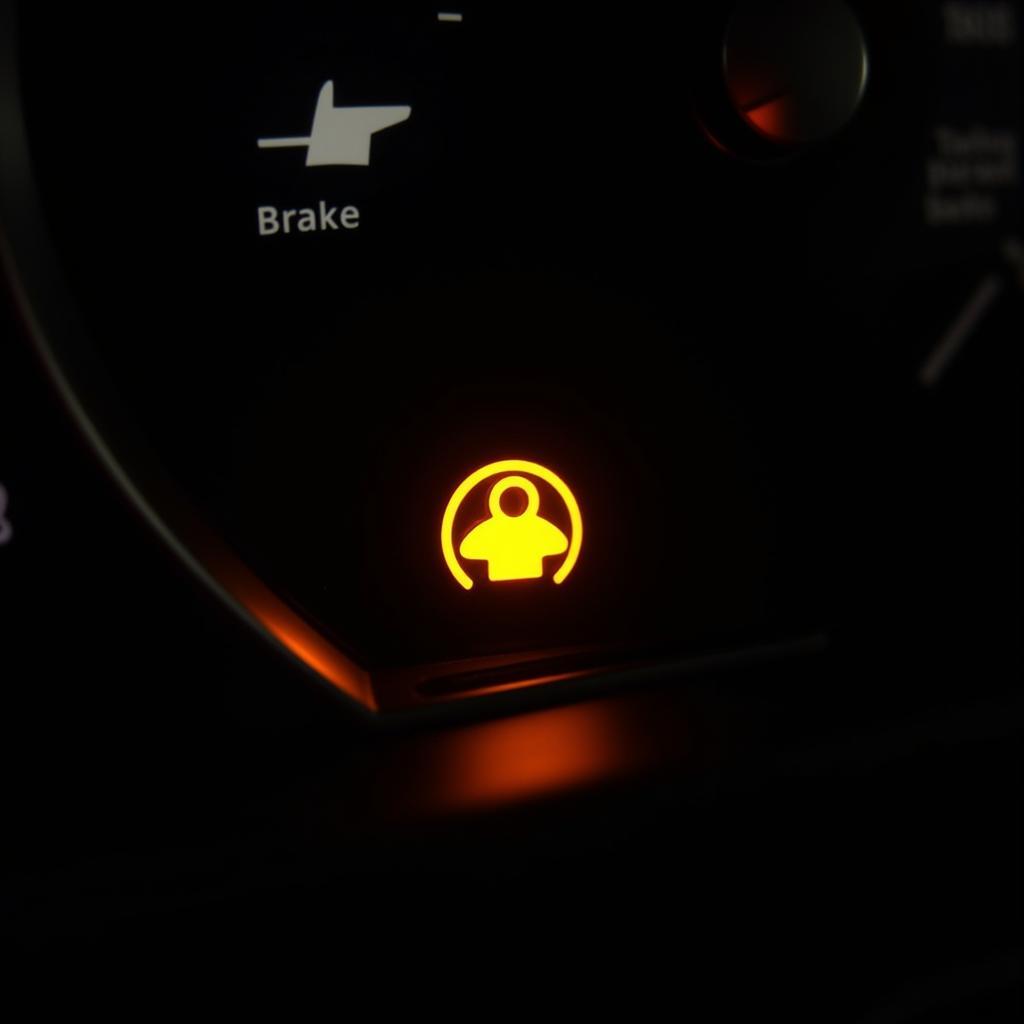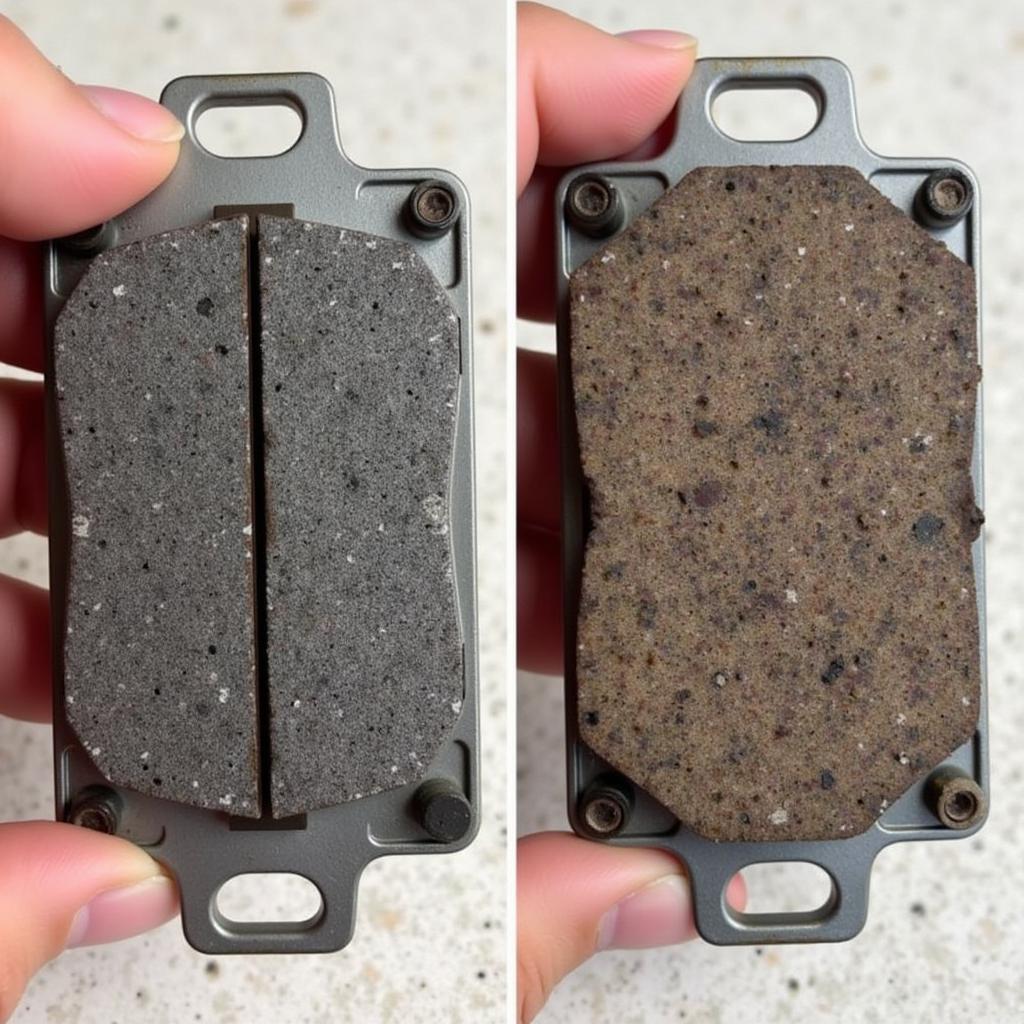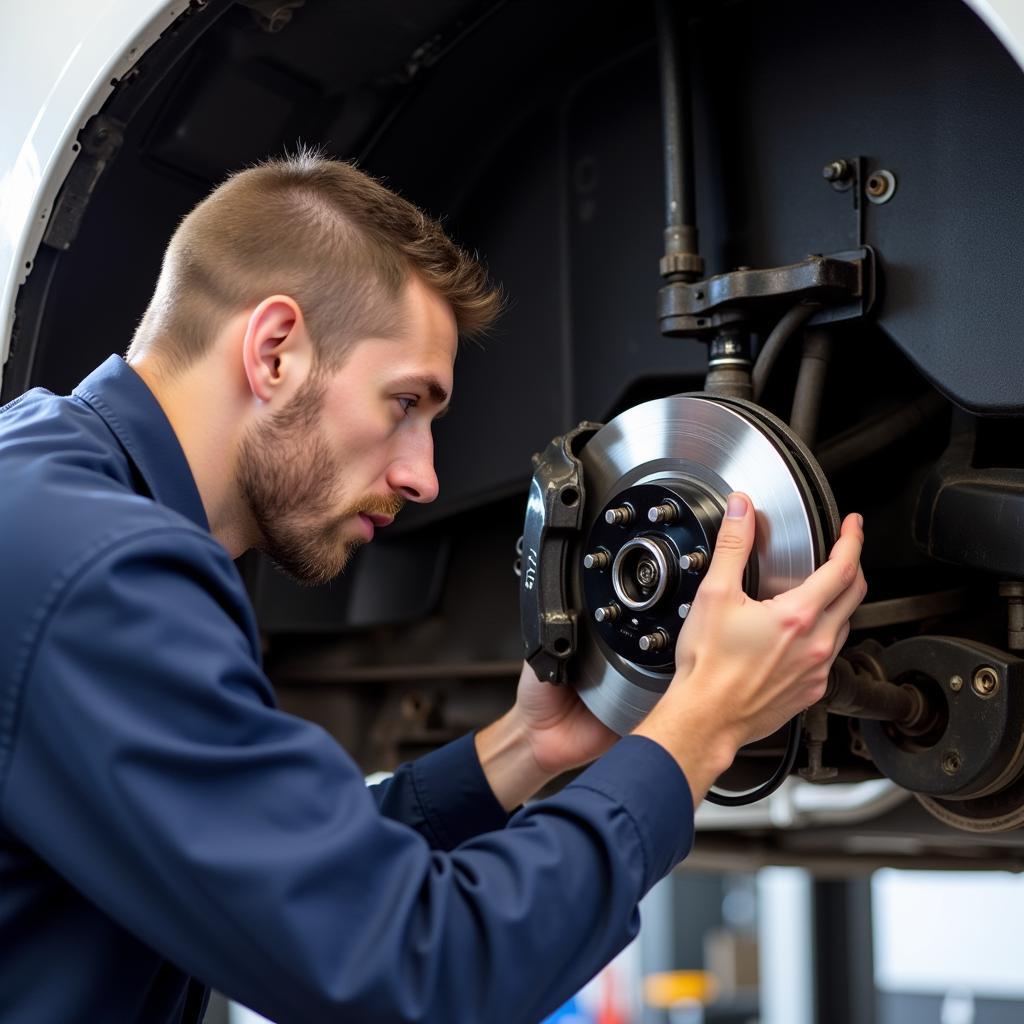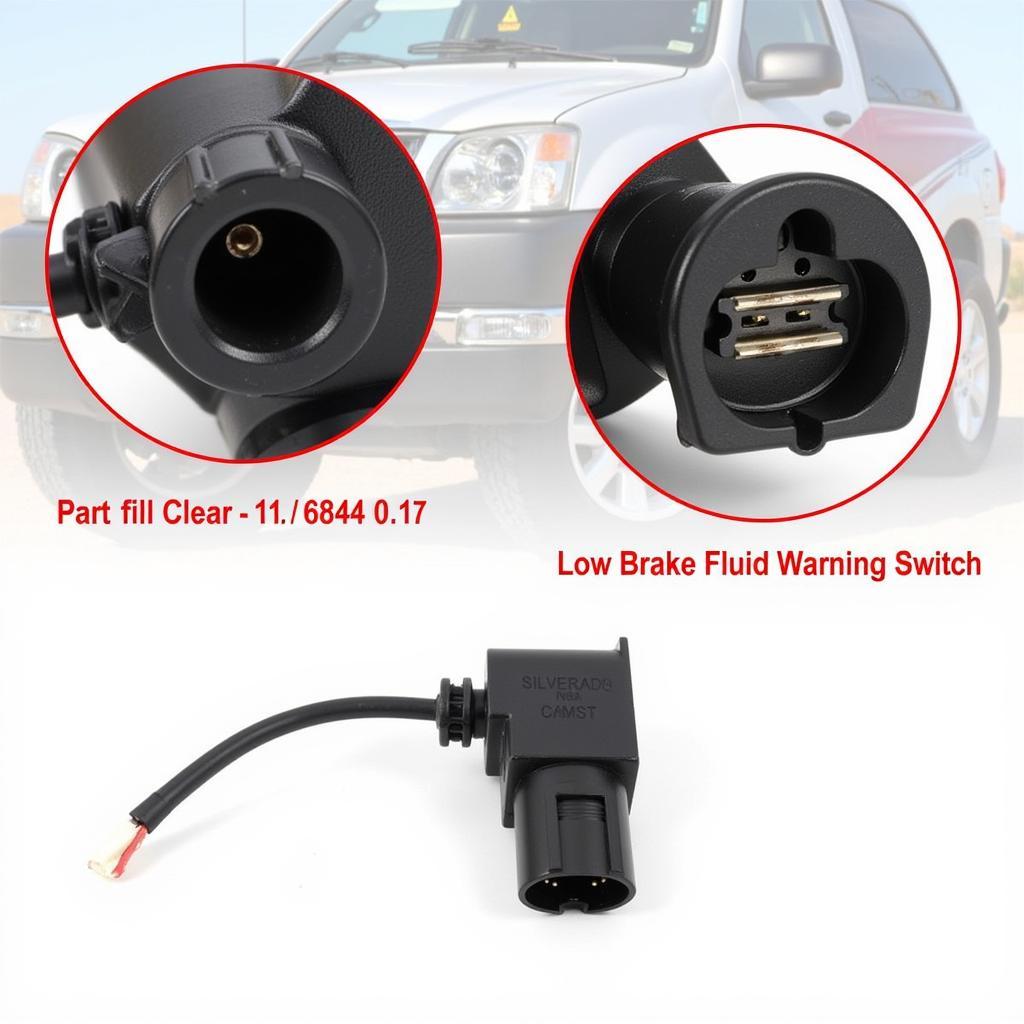The Lexus brake pad warning light, a familiar sight to many car owners, signals that your brake pads have worn down and need replacement. Ignoring this warning can lead to reduced braking efficiency and even damage your rotors, resulting in costly repairs. This article will guide you through the intricacies of the Lexus brake pad warning light, covering everything from its causes and symptoms to diagnosis and solutions.
Understanding Your Lexus Brake Pad Warning Light
Your Lexus utilizes a sophisticated system to monitor the health of your brakes. A sensor, usually embedded within the brake pad itself, triggers the warning light on your dashboard when the pad material wears thin. This early warning system allows you to address the issue before it escalates into a safety hazard.
 Lexus Dashboard with Brake Pad Warning Light
Lexus Dashboard with Brake Pad Warning Light
Common Causes of the Lexus Brake Pad Warning Light
While worn brake pads are the primary trigger for the warning light, several other factors can contribute to its illumination:
- Worn Brake Pad Sensor: The sensor itself can malfunction or become damaged, leading to a false warning.
- Brake Fluid Leak: A leak in your brake system can trigger the warning light as it is often linked to the same warning system.
- Faulty ABS System: Issues within the Anti-lock Braking System (ABS) can also activate the brake pad warning light.
Recognizing the Symptoms
Besides the illuminated warning light, other signs indicate your Lexus might need new brake pads:
- Squealing or Grinding Noises When Braking: This is a telltale sign of worn brake pads and requires immediate attention.
- Vibrations When Braking: Worn pads can cause uneven contact with the rotors, leading to vibrations felt through the brake pedal.
- Longer Stopping Distances: As your brake pads wear down, you might notice that your Lexus takes longer to come to a complete stop.
 Worn Out Lexus Brake Pads
Worn Out Lexus Brake Pads
Diagnosing the Issue: What to Do When the Light Comes On
If your Lexus brake pad warning light turns on, don’t panic. The first step is to assess the situation:
- Check Your Brake Fluid Level: Park your car on a level surface and locate the brake fluid reservoir under the hood. Ensure the fluid level falls within the minimum and maximum markers.
- Inspect Your Brake Pads: If you’re comfortable with basic car maintenance, you can visually check the thickness of your brake pads through the spaces between the wheel spokes.
Expert Insight: “Many modern Lexus models come equipped with electronic parking brakes. If you’re unsure about accessing or inspecting your brakes, it’s best to consult a qualified technician,” advises Mark Stevenson, a certified Lexus technician with over 15 years of experience.
Resolving the Lexus Brake Pad Warning Light
The solution to your brake pad warning light depends on the underlying cause:
- Worn Brake Pads: The most common solution is a brake pad replacement. Consider replacing the rotors simultaneously if they show significant wear and tear.
- Faulty Sensor: If your brake pads are in good condition but the sensor is faulty, replacing the sensor will resolve the issue.
- Brake Fluid Leak: Address any brake fluid leaks immediately by a qualified mechanic. This issue can severely compromise your safety.
- ABS Problems: Diagnosing and repairing ABS issues requires specialized tools and expertise. Take your Lexus to a qualified mechanic or dealership for diagnosis and repair.
Preventative Measures: Keeping Your Brakes in Top Shape
Extending the life of your brake pads and preventing premature wear is achievable through proactive maintenance:
- Smooth Braking: Avoid harsh braking whenever possible. Gradual braking reduces wear and tear on your brake pads.
- Lighten Your Load: Carrying excessive weight puts additional stress on your braking system, leading to faster wear.
- Regular Inspections: Schedule routine brake inspections with your mechanic or dealership. Early detection of potential issues can save you time and money in the long run.
 Mechanic Inspecting Lexus Brake System
Mechanic Inspecting Lexus Brake System
Conclusion
The Lexus brake pad warning light serves as a crucial safety feature, alerting you to potential issues with your braking system. Addressing the underlying cause promptly ensures optimal braking performance and keeps you safe on the road. Remember, regular maintenance and timely repairs are key to a smooth and safe driving experience.

